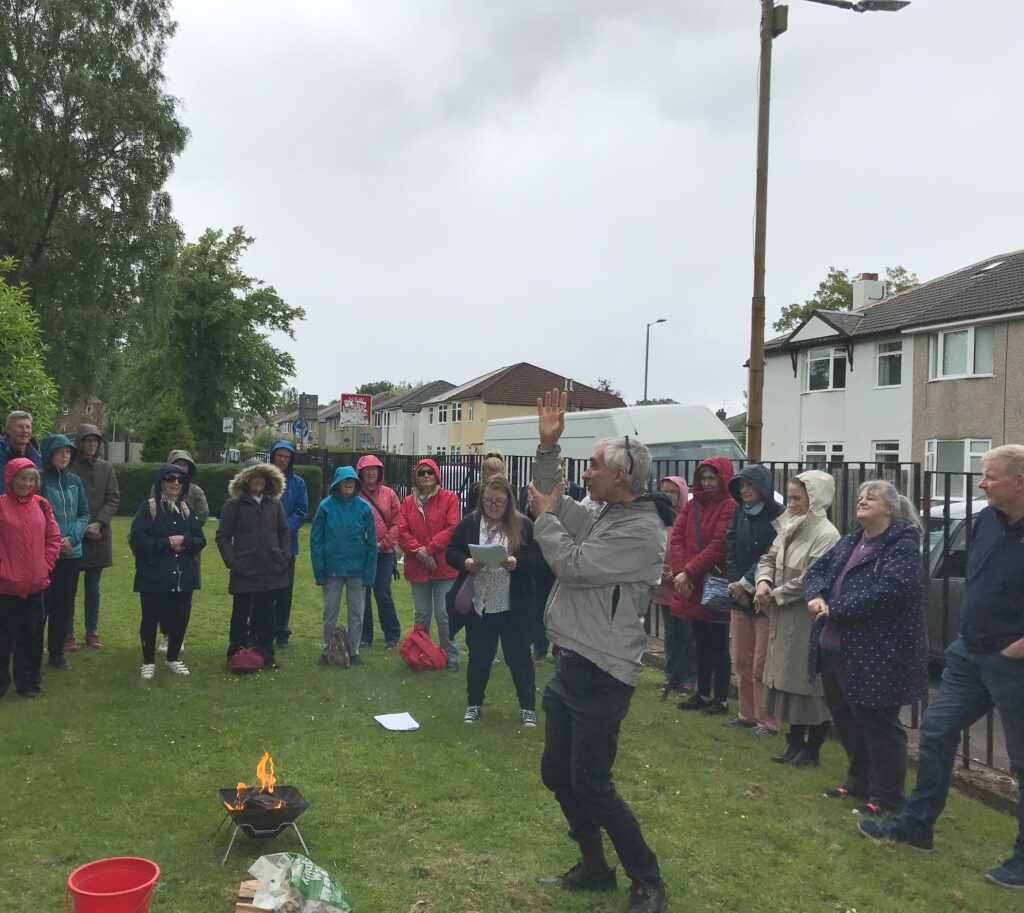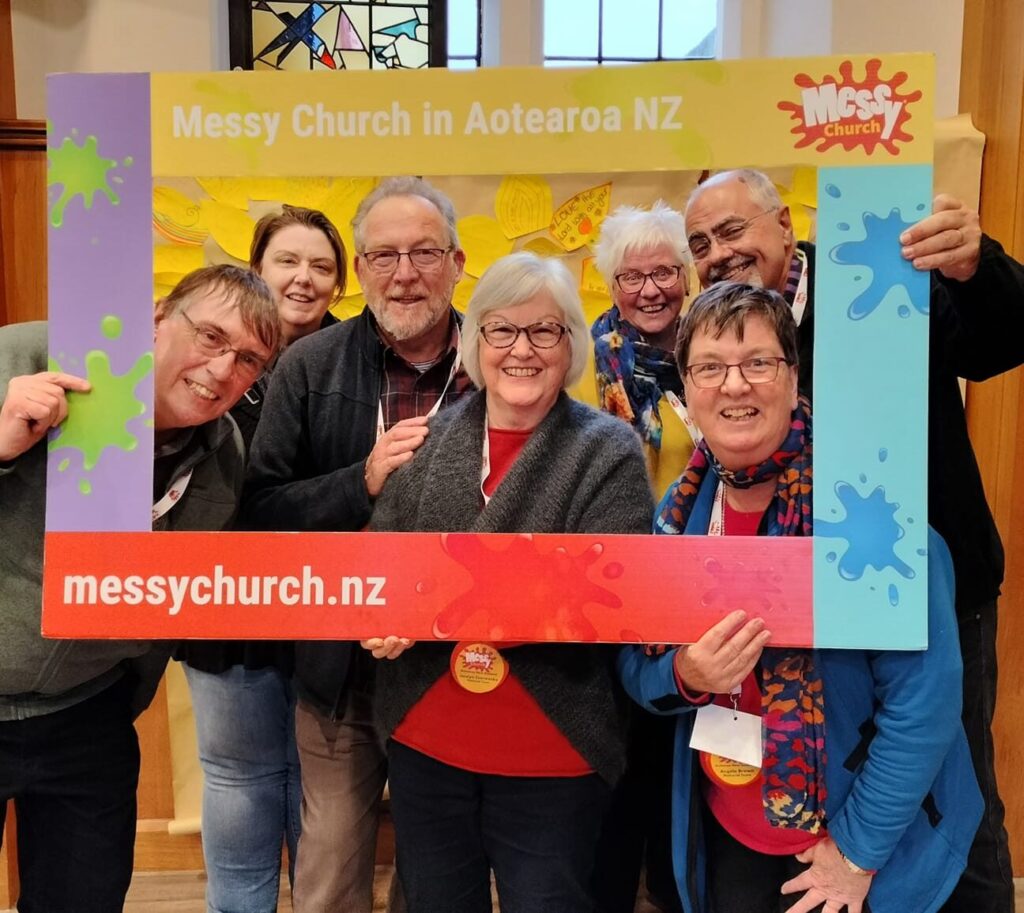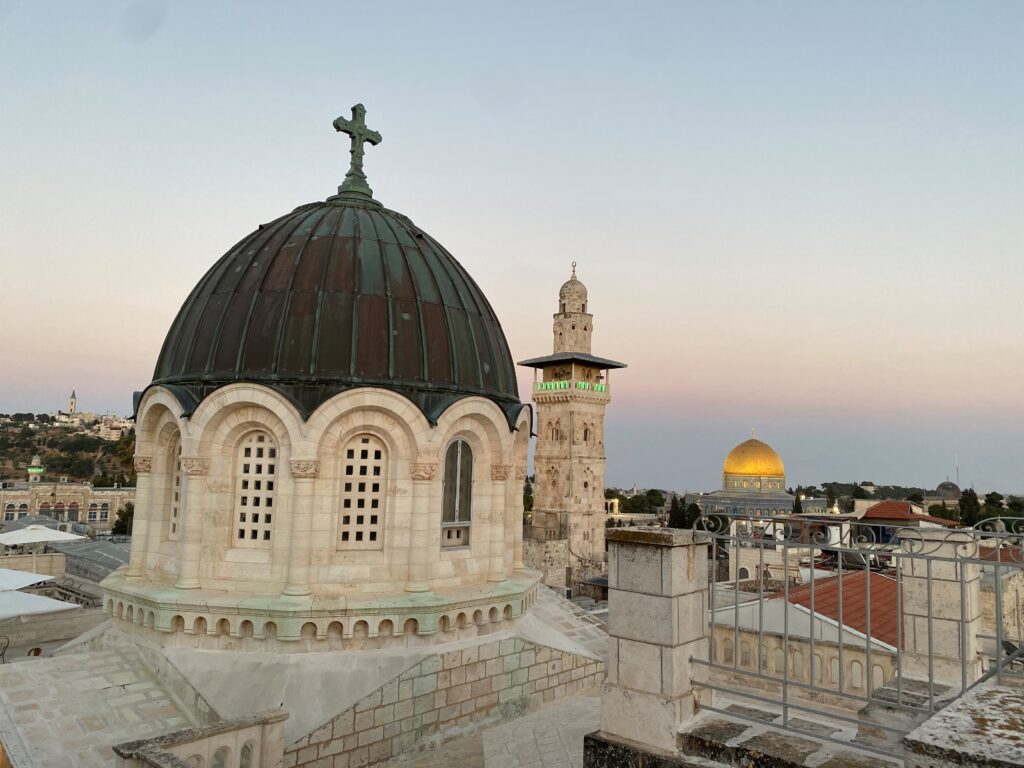What joy for those whose strength comes from the Lord,
who have set their minds on a pilgrimage to Jerusalem. Psalm 84:5 (NLT).
I was due to visit Jerusalem back in 2020, but the trip, as well as normal life, got ‘covid cancelled’. However, I had the opportunity to join a study trip on ‘Contextual theology’ with Cliff College, and with joy, found myself headed for the Holy Lands at the end of June 2023.
Before leaving I learnt that ‘back in the Middle Ages people used to go on pilgrimages to the Holy Land, and when asked where they were going, they would reply, ‘A la sainte terre’, ‘To the Holy Land’. They became known as sainte-terre-ers or saunterers.’ This conjures up images of a leisurely stroll, taking in the holy sites around the old city. However, my preconceived ideas of a ‘saunter’, together with the pictures I had formed in my mind of Bible events quickly evaporated, as we spent the first few days walking 12 km per day in 30-degree heat, dripping with sweat, swigging at our water bottles We certainly needed ‘strength from the Lord’!
I could have opted for an air-conditioned, standard coach-trip pilgrimage around the Holy Land, however, there was something attractive about joining a smaller walking tour of 16 people, with the opportunity of a grittier experience of the sights, sounds and smells of Jerusalem, at the speed that Jesus walked the earth – three miles an hour! Like the disciples, nearly 2,000 years ago, we followed our group leaders, stopping for meals, talking with the café owners and discussing what we’d seen, whilst experiencing the sort of distances Jesus would have walked as he headed in the evenings up the Mount of Olives, after a time of teaching in the temple (barely a 20-minute stroll in the cool of an evening). Over the course of twelve days, our group embarked on this journey as strangers and came back as friends, having been not only physically challenged but emotionally touched and intellectually stretched.
It soon became apparent that in any place where something significant involving Jesus occurred (birth, miracles, death, empty tomb etc.) someone has built a church. The church-building program started around 300 years after Jesus’ resurrection, when Helena, the mother of Roman Emperor Constantine, who had converted to Christianity, came on a pilgrimage to Jerusalem. The aural tradition of ‘this is the spot where Jesus…’ became a physical monument, as different Christian traditions decorated their churches with elaborate icons, mosaics and religious bling. Centuries later, I was visiting these ‘holy’ shrines, in various states of repair or rebuild.
One question we considered was ‘What makes holy ground?’ Who designates it as goly? Is this God or us? Some consider these spaces holy because we’re walking in the historic footsteps of Jesus. However, in Exodus, God calls out to Moses from inside the burning bush, warning, ‘Take off your sandals, for you are standing on holy ground,’ suggesting that it’s the encounter with God that makes a place holy. This rings true in Celtic spirituality, where the term ‘thin place’ is used to describe where people have met with God in a profound and unexpected way, traditionally outside and often connected to places where water disappears into the ground (keep this in mind on your next Messy Church Goes Wild adventure!). I wondered if Jerusalem would be a ‘thin place’ for me. When considered in a less individualistic way, a place can be holy because it’s where a community of faith has gathered to pray for generations, with the expectation to meet with God.
For centuries now, not only Christians but Jews and Muslims have gathered to pray. All three religions consider Jerusalem a holy city but for different historical reasons. In the Judeo-Christian tradition, Jerusalem is built on Mount Moriah. Temple Mount, the footprint that remains of the temple built by Solomon according to King David’s design 3,000 years ago, stands over the spot where Abraham was prepared to sacrifice his son Isaac (Genesis 22:1-19). After the Jewish temple was destroyed a second time in 70 AD, the Romans built a temple to a Roman God. Around 100 m away, the Christians built the church of the Holy Sepulchre, consecrated in 335 AD, marking two holy sites: the spot of Jesus’ crucifixion, where God sacrificed his son to redeem the world and the cave where Jesus was buried. Then in the late 7th century AD, the Al-Aqsa Mosque was built with its gleaming dome of the rock shrine, following the Muslim conquest of Jerusalem. For Muslims, it commemorates the spot where Abraham was prepared to sacrifice his son Ismail and where the Prophet Muhammad was taken up into heaven for an encounter with God. The Crusades, with much violence, followed and between 1917-1948, the British Empire also had a spell at controlling the area. Today, ‘Temple Mount’ is contested between the Jews and the Muslims. The Western Wall is the most religious site in the world for the Jewish people to pray, as the presumed site of the holy of holies, the most sacred site in the Jewish faith, lies just behind it. Meanwhile, the Israeli authorities are now busy excavating their way underneath, looking for relics. I was half expecting Indiana Jones to jump out at any moment!
I hope this much abbreviated religious history of Jerusalem explains why so many people of different faiths call this place the ‘Holy Lands’, and why a place of encounter with God has become an area of deep divide and conflict. I’ll be reflecting on other aspects of my ‘saunter’ in future blogs, in the meantime, I wonder…
What do you consider as a holy place?
How can your Messy Church be holy ground, a place for people to encounter God?
Where in your ministry do you experience tension, fighting from different sides, or a gradual undermining? Where is repentance or forgiveness needed?
Where do you expect to encounter God? Where do you take off your shoes, ‘for you are standing on holy ground?’
Aike Kennett-Brown
BRF Messy Church ministry lead
You may also like

Reuben on Resources…
15th Jul 2024
When football and faith collide
11th Jul 2024As you might have guessed from last week’s Facebook live, I love sport, in particular football and F1 so it’s been quite a few days! When faith and football collide, that makes me very happy!

Dr Dave’s Messy Adventure
9th Jul 2024How do you begin to encompass in a few words a trip lasting 4 weeks, across two vast counties and three time zones, as well at least three different climates.


